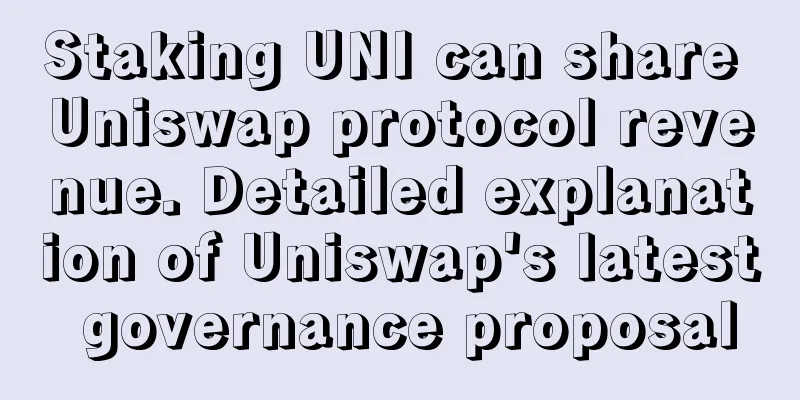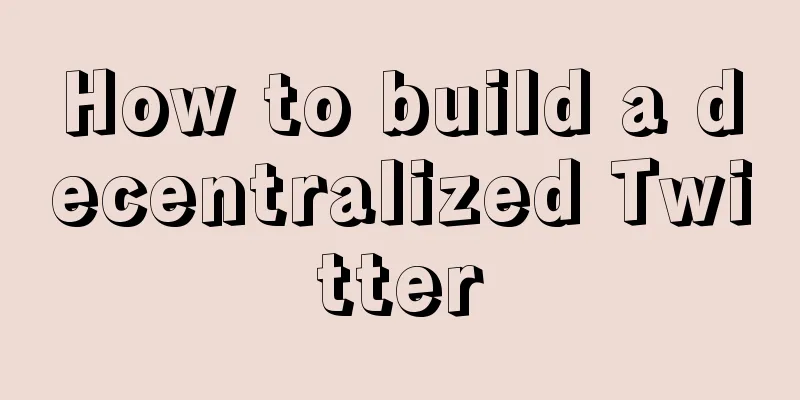Staking UNI can share Uniswap protocol revenue. Detailed explanation of Uniswap's latest governance proposal

|
Note: On February 23, 2024, the Uniswap Foundation issued a new proposal to distribute protocol fees to staked UNI token holders. Influenced by this news, the price of UNI rose from $7 to $12 in a short period of time, an increase of more than 70%. According to cryptofee data, Uniswap's protocol fee income reached $2.14 million on February 22, with a 7-day average income of $2.05 million. As of today, Uniswap's protocol fee income in February has reached nearly $46 million. Uniswap's protocol fee income in January 2024 reached $58 million. So, what does the proposal say? Let’s take a closer look at the latest proposal from the Uniswap Foundation. summary
Introduction: Activating Uniswap GovernanceThis proposal aims to revitalize and strengthen Uniswap’s governance system by incentivizing active, engaged, and thoughtful delegation. Specifically, we propose upgrading the protocol so that its fee mechanism rewards UNI token holders for delegating and staking their tokens. The Uniswap Foundation team is often asked what successful governance looks like for Uniswap. Quite simply, successful governance equates to long-term sustainability and continued growth of the protocol. Governance controls the Uniswap treasury as well as core parameters related to the long-term sustainability of the protocol (e.g. fees). In 5, 10, 20 years, the continued success of Uniswap — and whether it truly becomes the liquidity layer for the internet — will be the result of its delegates and the decisions they make. Over the past year, the Uniswap Foundation has prioritized improving the delegation experience. We’ve given delegates the opportunity to launch the platform (delegation competitions) and provided them with the information they need to make good decisions. Next week, we’ll launch GovSwap at ETHDenver, the first in a series of in-person gatherings designed to produce good governance outcomes by defining shared goals. Subsequent GovSwaps will take place at ETHcc and Devcon. For delegators, we funded and launched Agora 30, a platform that allows delegators to find delegates who best represent their interests. As a result of these efforts, delegation activity has increased, as evidenced by the growing number of community-driven governance initiatives. For example, in the last three months:
However, much can be done. Free-riding and apathy remain existential risks to the sustainability of the Uniswap protocol. Less than 10% of circulating UNI are used to vote on a given proposal. Furthermore, a large portion of existing delegation is “stale.” As of February 1, 2024, 14 of the top 30 delegates by voting power have not voted on the past 10 proposals, and only 7 of them have ever created a proposal. We are excited to be able to incentivize governance by tying delegation to protocol fees — incentivizing not only delegation, but thoughtful and active delegation. Specifically, we believe UNI token holders will be motivated to choose delegates whose votes and participation in the protocol will lead to its growth and success. If this proposal is successful, we believe we will see an influx of new delegations. And because existing delegators will need to re-delegate to stake their tokens, we will see “stale” existing delegations move to delegates who have demonstrated their commitment to supporting the protocol. Furthermore, this mechanism can run on its own in the future — continuing to incentivize engaged delegation without any additional conveniences. Summary of Proposed Technical ChangesThe Uniswap Foundation has funded the research and development of the various components required to implement this proposal. Specifically, we have funded two new smart contracts that are designed to be deployed into and interact with the existing ecosystem of Uniswap contracts running on-chain. If this governance proposal is implemented, they will: 1. Upgrade Uniswap protocol governance to achieve permissionless and programmatic protocol fee collection 2. Proportional distribution of protocol fees to UNI token holders who have staked and delegated voting 3. Allow governance to continue to control core parameters: which pools charge fees, and how big the fees are Below we briefly outline the two new contracts. More technical details can be found in the appendix. The two new contracts are V3FactoryOwner.sol and UniStaker.sol. 1. V3FactoryOwner.sol allows for programmatic, permissionless collection of protocol fees, and includes a mechanism to incentivize the conversion of these fees into a generic ERC20 for distribution to stakers who have deposited UNI into Unisaker.sol. In order for this contract to work, it needs to be the owner of UniswapV3Factory. 2. UniStaker.sol manages delegation and fee distribution. Participants who respond to the mechanism in V3FactoryOwner.sol deposit ERC20 into UniStaker.sol for distribution to stakers. UniStaker.sol is modeled after Synthetix's tried-and-tested StakeRewards.sol, but extends the functionality of that contract in two key ways: 1) it requires staking accounts to delegate their tokens, and 2) it allows (but does not require) staking accounts to distribute staking rewards to any other account. Next stepsIf governance supports this move, we will move forward with this vote. Specifically, a successful on-chain vote will update the owner of the mainnet UniswapV3Factory to deploy V3FactoryOwner.sol, enabling the programmatic fee mechanism described above. The next steps are: 1. February 23: Per the governance process, this post will remain open for conversation for at least 7 days. 2. February 23: Code4rena audit competition begins and will last for 10 days. 3. Next Friday, March 1: After the Code4rena competition ends, the Uniswap Foundation will release a snapshot with the options "Yes, upgrade the owner of UniswapV3Factory", "No, do not upgrade the owner of UniswapV3Factory", and "Abstain". Any mitigation measures, V3FactoryOwner and UniStaker instances will be deployed and verified on Etherscan. 4. March 7: Assuming the snapshot is successful, the Uniswap Foundation will issue an on-chain vote, the successful execution of which will call the setOwner function of UniswapV3Factory and pass it the v3FactoryOwner address. 5. The Immunefi bug bounty will be in effect until a successful on-chain vote ends. Details of the bounty (including a link) will be provided before the on-chain vote is proposed. These dates are subject to change based on review outcomes and community dialogue. Assuming the on-chain vote is successful, the community will have the option to collect fees. To this end, Gauntlet is preparing a proposed rollout process that will be published on the forum. Only after completion of this separate governance process will fees begin to be collected and distributed according to the contract adopted in this proposal. Appendix A: Technical Overview of Uniswap Protocol FeesA detailed description of the protocol fee mechanism that currently exists can be found on the Uniswap Foundation blog. A brief summary is as follows: 1. Protocol fees are expressed as a fraction of LP fees (which ranges from 1 to 100 basis points). The specific fraction can be adjusted through governance and can be 0, 1/4, 1/5, 1/6, 1/7, 1/8, 1/9, or 1/10. They are currently set to 0. 2. The protocol fee is set per pool, and the fee is accumulated among the two tokens that make up the pool. 3. UniswapV3Factory is the core contract of Uniswap V3; it starts a separate pool contract to which users can add liquidity and swap back and forth. The factory owner is the only contract that can enable fees in the pool and collect fees when enabled. Currently, the owner is the Timelock 3 contract of Uniswap Governance. The proposed vote will change the owner of UniswapV3Factory to the deployment of V3FactoryOwner.sol. Appendix B: New Contract Description and ParametersThe smart contract part of our proposed solution consists of two custom contracts, designed and written by Scopelift. This appendix discusses each of them. V3FactoryOwner.sol The fee mechanism sets up a constant "race" in which external parties (which we assume will include MEV bots, arbitrageurs, etc.) compete to claim the fees generated by each pool as it becomes profitable. External parties claiming fees are required to deposit (in our proposed implementation) 10 WETH into the UniStaker.sol deployment (details below). In other words, once the value of accrued fees exceeds 10 WETH (plus gas), rational actors are incentivized to convert accrued fees into 10 WETH and send directly to the UniStaker.sol contract. Additionally, V3FactoryOwner is configured to pass function calls from Uniswap Governance that are required to open and adjust protocol fees in any pool deployed from the Uniswap V3 Factory contract. These adjustments still require a governance vote. In order for this contract to work, it needs to be the owner of UniswapV3Factory. The first vote (the upgrade vote) will update the owner of UniswapV3Factory to the address of the deployed instance of V3FactoryOwner.sol. V3FactoryOwner has four parameters that are configured at contract deployment time. Appendix C: Protocol Fee Allocation LogicThe rate at which accrued protocol fees are distributed to UNI stakers, as well as the size of staker rewards, is determined by multiple variables. Specifically: 1. Reward Tokens (set on UniStaker and V3FactoryOwner). This is the denomination of rewards allocated to UNI stakers. 2. Reward amount (set on V3FactoryOwner). This is the total reward amount distributed among stakeholders for each deposit. A higher reward amount means that fees will be collected and distributed to stakeholders less frequently than a lower reward amount, all other factors remaining the same. 3. Reward duration (set on UniStaker). The length of time a given reward amount is distributed after it is deposited into UniStaker. Longer reward durations incentivize stakers to stake and therefore delegate over a longer period of time to earn the same amount of fees, all other factors remaining constant. 4. The staker’s share of the total UNI staked: Protocol fees are distributed proportionally to stakers on a given block. If a staker has a larger share of the total UNI staked in a given block, they will receive relatively more fee rewards, all other factors remaining constant. 5. Volume. All other factors being equal, higher volume means fees are collected and distributed to stakeholders more frequently than lower volume. Please note that the bonus period "clock" is reset each time a deposit is made. Any outstanding bonus amount is added to the newly deposited bonus amount and that amount will be distributed over the subsequent bonus period. To illustrate these allocation mechanisms using an example, assume that we have defined the contract variables as follows:
Whenever more than 10 WETH in fees are generated in the pool, a third party is incentivized to collect these fees and allocate 10 WETH to UniStaker. From then on, they will be distributed proportionally to stakers within 30 days. Example 1: Simple case
Example 2: New reward distribution
Example 3: New Stakers
|
<<: Why did Circle's USDC cut ties with TRON: To protect itself?
>>: Uniswap (UNI) surged by more than 50%
Recommend
The characteristics of an official's appearance
From ancient times to the present, people have be...
Blockchain team members leave Deloitte to form startup
Rage Comment : Deloitte has established cooperati...
What facial features will a woman have if she is unfaithful? What facial features will a man have if he is unfaithful?
Not only men can be unfaithful, but women can be ...
Women with deep nasolabial folds have bad luck
"Law lines" are lines that appear on bo...
Palmistry analysis of the half-moon mark on the fingernails
In fact, in palmistry, it not only symbolizes one...
Analysis of the face of a man with three white eyes. Is the man with three white eyes lucky?
Generally speaking, eyes are an important part of...
Bitcoin investor predicts that Bitcoin price will surge to over $27,000 in the next four months
(Original title: Bitcoin investors predict: In fo...
Is it good for people with flat noses and dark circles to have good luck in love?
People with flat noses and dark circles under the...
What kind of palm print has the most miserable fate?
10 types of palm lines that indicate the most mis...
Marrying a woman who is greedy and loves to spend money will ruin the family
Men all want to marry a thrifty and housekeeping ...
A person who will never black out even when drunk has a very pointed nose
After getting drunk, some people will completely ...
Thoughts on the hashrate threshold for activating Bitcoin forks
Chapter 0 Introduction Classic can fork with 75% ...
The most detailed illustration of moles on the face
The fate of having a mole on the forehead Women w...
What are the facial features of women who are prone to cheating? What kind of women have extramarital affairs?
A person who loves to cheat is disliked by people...
Mole under the earlobe - Mole physiognomy
In physiognomy, ears are a symbol of whether a pe...




![[100 Questions and Answers about Filecoin in Pictures] Question 39: What is the initial pledge of Filecoin?](/upload/images/67e69c8d1ec78.webp)




